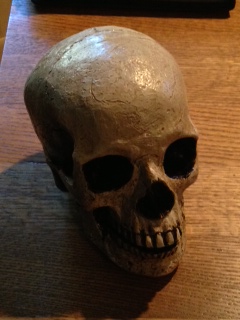Last week I provided some commentary on the use of character descriptive tags. I promised that I would follow that up with one regarding character traits. So, let’s clear up the question that I know has kept you awake every night since my last post, “What is the difference between a tag and a trait?”
The correct answer is: It depends on who you ask. But, since this is my post you will get my opinion. Tags are primarily, descriptors of a character’s appearance. These are words you might use to describe a picture of your character to someone else. Hair color or style, eye color of shape, general body type, height, weight, clothing worn, tattoos, scars, jewelry, tools carried, weapons, are all examples of tags.
Traits on the other hand, are those descriptors that make your two-dimensional character jump off the page. In most cases they are action or sensory oriented. Traits help the reader create a motion picture that affects all five of their senses.
Physical:
How does the character move? Does she limp? Does she have grace? Is she a good dancer? Does she routinely trip over her own feet?
What is the character’s mannerisms, gestures, and expressions? Two of my favorite bloggers have already addressed this, so here are the links to their posts. Carlie Macullen wrote a wonderful post relating to this group of descriptors. Also, Nicolette Jinks wrote an interesting post on body language. They are certainly must read material.
How does the character sound, smell, feel, and taste? What does his voice sound like? Does she wear perfume or does she reek of garlic? Is his handshake cold and clammy? Does her throat taste like the apricot scrub she used this morning? The more senses you can include, the more real the character will become.
Psychological:
This where you should go back to the volumes of character information you generated at the airport, (See previous post) and dig through your character personality, family history, back story, life crises, etc. What you want to do is find quirks, oddities, phobias, likes, and dislikes that will give your character that extra spark of interest and make them REAL! If you did your home work you should have a boatload to choose from. Decide on a couple to use that help clearly define your character. Clearly, this is where you insert flaws into your character.
Some notable examples include: Indiana Jones was afraid of snakes. Dr. Robert Langdon had claustrophobia from being stuck in a well as a child. Felix Unger was a neat freak. Ocean Eleven’s, Rusty Ryan was constantly eating something.
Don’t be afraid you will hurt your character by making them unusual. Trust me here, we are all unusual. Even identical twins are not truly identical. Otherwise, my trip to the airport would yield a blank notebook.
Like tags, traits can be overused. If a character has too many flaws, the become unbelievable and the reader will get bored. On the flip side, if you don’t use them, your characters will come off flat and uninteresting. This results in the reader getting bored. We all know what happens when a reader gets bored, the book closes. Just like chocolate and alcohol, use tags and traits in moderation.
One more thing, while I’m on the subject, Do not forget your supporting cast. Unless your main characters are interacting with crash-test dummys, add a few tags to your minor characters. It would not be the first time that the ogre”s spanish accented, sword-wielding side-kick cat, became the star of his own story. (I love that movie.)
So, go forth and flaw your characters. Make them real. And please, let me know how it works for you.

